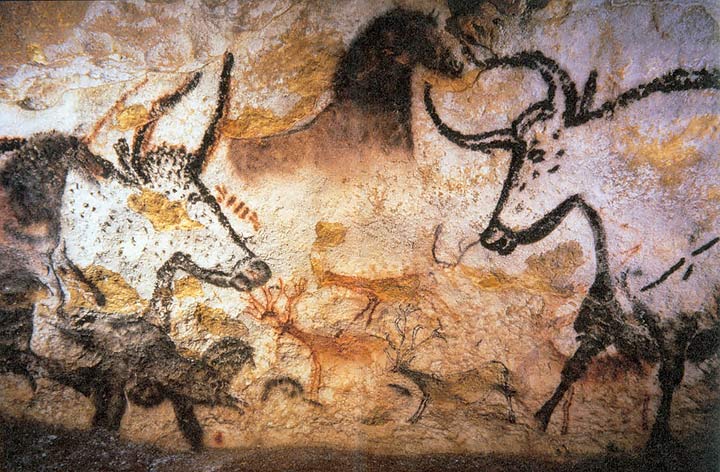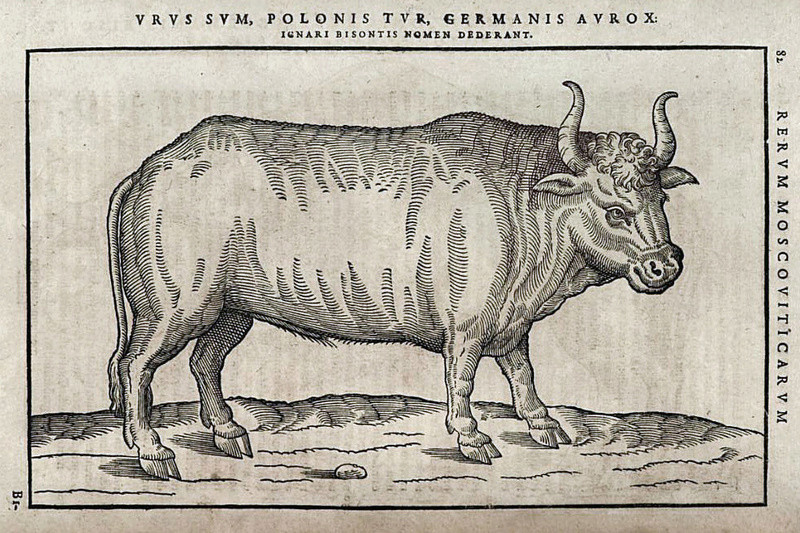
Tur is not a Slavic but a Latin word – Taurus, and a lot of similarity is seen in certain Illyrian names such as Teut or Trit, forms such as Tritan or Tritatron, and even Tana or Medauros. It is interesting to note that in the Bosnian language Tur is used for the part of pants, long johns or even pantaloons which connects tights, actually the hem between the legs, which connects them into a whole. Similarly the word Tur can be seen as an abbreviation from the terms poturiti or podturiti i.e. underlay something in order to keep a load or mass from falling.
Tur (taxonomically and Latin: Bos primigenius) is an extinct genus of a wild bovine, which lived in Europe, Asia and North Africa, it is a forefather of today’s cattle. The last European exemplar lived until 1627.
Tur was from the old days an important animal for the survival of mankind; that’s why the drawings and descriptions of it are present even inscriptions “Comments on the Gaelic wars (Commentarii de bello, Gallico) from Julius Cesar. His character became the status symbol of numerous European states and cities: Alba-lulia, Kaunas, Romania, Moldavia, Turka, province Mecklenburg and Swiss canton Uri, which was named after him.
Tur was larger than cattle today which is familiar to us. It was 160-180 cm tall (males) and 150 (females), 2.8 meters long without the tail, the tail was 0,8 meters long. Tur’s had pronounced sexual differences, besides the basic biological differences in the built of sexual organs, they differentiated themselves by colour and size, females were shorter and smaller (smaller backbone) than males. Males were black-brown, and females red-brown, both had light, almost white, horns with black tops. Tur was abundant in almost entire Europe. Their habitat were usually steppe, taiga, wet swampy forests and river valleys. These bovines lived in herds, except a few older bulls which lived alone, until the mating season when they would join the herd. In the herd which had a few dozen units, there was a dominant male, and during the mating period there were fights over the females. mating took place during the end of summer, and calf’s were born during the end of spring. Tur usually fed off of grass, but also fruit, leaves and softer branches. Unlike most cattle today which are in essence day animals, Tur was active at dusk and night. According to the research of the paleontological museum of the University in Oslo, the first exemplars appeared on the area of today’s India before two million years BC, from where they migrated to the Middle East and other parts of Asia. They reached Europe around the year 250 00.








» Love spell with menstrual blood
» Bacanje graha - zavirimo malo u sudbinu!
» Sanovnik - tumačenje snova
» Velike čarolije sa nožem
» PAGANSKI/VJEŠTIČJI TALISMANI I AMULETI (Bosnian/English)
» Solju protiv magije
» MAGIC FOR EVERY WITCH
» Molitvom i svijećom uklonite zlo i lošu sreću